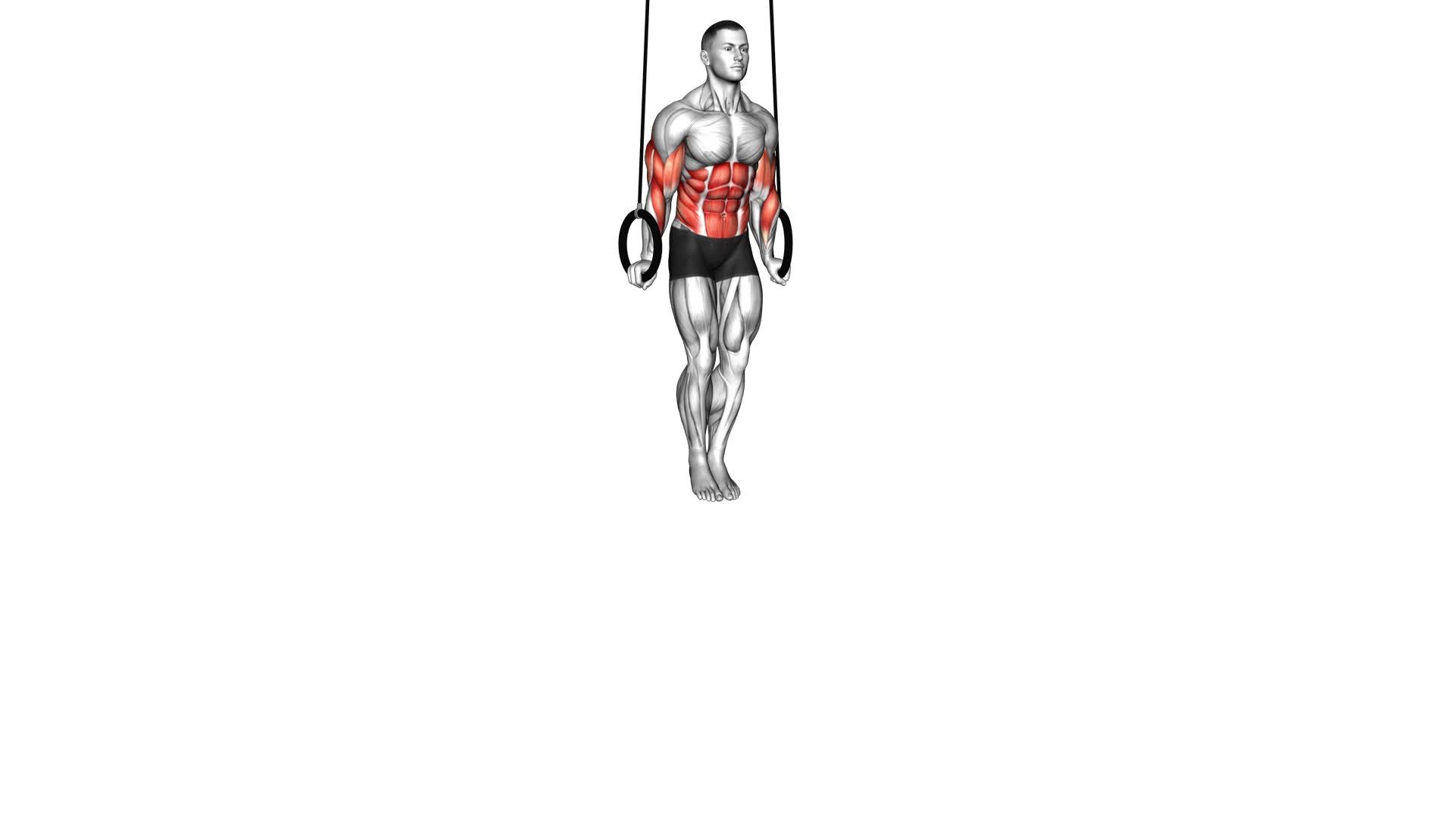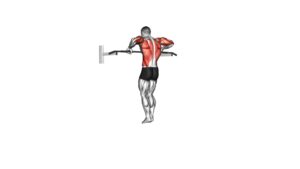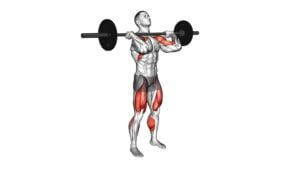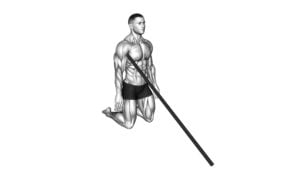Muscle-up – Video Exercise Guide & Tips

Are you looking to master the muscle-up?
Watch This Exercise Video
This video exercise guide is here to help you. With proper form and technique, you'll be able to level up your fitness routine. Avoid common mistakes and learn progressions and modifications to achieve success.
Watch the video and follow the tips to take your muscle-ups to the next level.
Let's get started!
Key Takeaways
- Muscle-ups target multiple muscle groups simultaneously, including back, chest, arms, and core.
- Incorporating muscle-up training programs into your routine is crucial.
- Use a sturdy horizontal bar with a secure grip.
- Avoid swinging too much and focus on controlled movements.
Benefits of Muscle-ups
Experience the incredible benefits of muscle-ups and level up your strength and fitness game. Muscle-ups, a challenging exercise that combines both a pull-up and a dip, offer a wide range of benefits for your body. One of the main advantages of muscle-ups is that they target multiple muscle groups simultaneously, including your back, chest, arms, and core. By engaging these muscles together, muscle-ups provide a more efficient and effective workout compared to isolated exercises.
Additionally, muscle-up variations allow you to target specific muscle groups even more, such as using a wider grip for more emphasis on your lats or a narrower grip to target your triceps. This versatility allows you to tailor your muscle-up routine to your specific goals and preferences.
To make the most out of muscle-ups, incorporating muscle-up training programs into your workout routine is crucial. These programs focus on progressively increasing your strength and endurance to achieve full muscle-up proficiency. By following a structured training program, you can gradually build the necessary strength and technique required to perform muscle-ups with ease.
Proper Form and Technique
To perform muscle-ups with proper form and technique, focus on engaging your muscles and maintaining a controlled and fluid motion. Here are four key tips to help you achieve this:
- Start with a strong grip: Begin by gripping the bar with your palms facing away from you and your hands slightly wider than shoulder-width apart. This grip will help you maintain control and stability throughout the movement.
- Engage your core: Before initiating the muscle-up, engage your core muscles by tightening your abs and glutes. This will provide a stable base and help you generate power for the upward movement.
- Use your legs as a lever: As you pull yourself up towards the bar, engage your leg muscles and use them as a lever to assist in the upward movement. This will help you generate more power and make the muscle-up easier to execute.
- Maintain a smooth and controlled motion: Avoid rushing through the muscle-up and instead focus on maintaining a smooth and controlled motion. This won't only reduce the risk of common injuries such as shoulder strains but also allow you to fully engage your muscles and reap the benefits of the exercise.
Equipment and Set-up
You will need a sturdy horizontal bar and a stable surface to perform muscle-ups. When it comes to gym equipment, you want to make sure the bar can support your body weight and provide a secure grip. Look for a bar that's made of strong materials like steel or aluminum and has a weight capacity that meets your needs.
It's also important to have a stable surface underneath the bar to ensure safety and prevent any accidents. A solid floor or a mat can provide the stability you need during your training routine.
Setting up the equipment properly is crucial for a successful muscle-up. Make sure the bar is at a height that allows you to fully extend your arms when hanging from it. Additionally, ensure that there's enough space around the bar for you to move freely.
With the right equipment and set-up, you'll be ready to tackle the muscle-up exercise. Now, let's move on to the next section and discuss common mistakes to avoid.
Common Mistakes to Avoid
To avoid common mistakes during muscle-ups, focus on maintaining proper form and technique. Here are four technique errors to avoid:
- Swinging too much: One common mistake is using excessive momentum by swinging your body back and forth. This not only takes away from the effectiveness of the exercise but also puts unnecessary strain on your shoulders. Instead, focus on controlled and controlled movements.
- Neglecting the grip: Another mistake isn't paying attention to your grip. Make sure to grip the bar tightly with your hands and keep your wrists in a neutral position. This will provide better stability and prevent slipping or injury.
- Not engaging your core: Many people forget to engage their core muscles during muscle-ups. This can lead to a lack of control and stability. Remember to tighten your abdominal muscles throughout the movement to maintain proper form.
- Rushing the movement: Lastly, rushing through the muscle-up can lead to sloppy technique and potential injuries. Take your time and perform each phase of the exercise with control and precision, focusing on proper muscle activation.
Progressions and Modifications
By progressing through different variations and making modifications, you can continue to improve your muscle-up technique. Progressions and modifications are essential for challenging your muscles and taking your muscle-up to the next level.
Once you have mastered the basic muscle-up, you can start incorporating advanced variations to further enhance your strength and skill.
One progression you can try is the false grip muscle-up. This variation involves gripping the rings with your wrists turned inward, allowing for a more efficient transition from the pull-up to the dip.
Another modification is the kipping muscle-up, which involves using a swinging motion to generate momentum and make the movement easier. This can be a helpful progression for beginners or those who are still working on building their upper body strength.
To continue challenging yourself, you can also experiment with different grips, such as the wide grip or the narrow grip. These variations target different muscle groups and can help you develop a well-rounded upper body strength.
Remember to always maintain proper form and technique while performing these progressions and modifications. It's important to gradually increase the difficulty level and listen to your body to avoid injuries.
With consistent practice and determination, you'll be able to master the muscle-up and achieve your fitness goals.
Tips for Success
Continuing with the theme of progressions and modifications, a key tip for success in mastering the muscle-up is to focus on proper technique and form. By preparing mentally and staying consistent, you can improve your chances of achieving this challenging exercise. Here are four tips to help you succeed:
- Visualize success: Before attempting a muscle-up, take a moment to visualize yourself performing the movement smoothly and effortlessly. This mental preparation can help build confidence and improve your mind-muscle connection.
- Strengthen your upper body: The muscle-up requires significant upper body strength, particularly in the shoulders, chest, and arms. Incorporate exercises like pull-ups, dips, and push-ups into your workout routine to develop the necessary strength.
- Practice the transition: Transitioning from the pull-up to the dip is often the most challenging part of the muscle-up. Focus on mastering this movement by practicing the transition with assistance or using resistance bands. Gradually decrease the assistance until you can perform the transition unaided.
- Be consistent: Consistency is key when it comes to mastering the muscle-up. Dedicate regular practice sessions to this exercise and be patient with your progress. With time and persistence, you'll build the strength and technique required to achieve the muscle-up.
Frequently Asked Questions
Can Muscle-Ups Help in Improving Overall Upper Body Strength?
Muscle-ups can definitely help improve your overall upper body strength. By incorporating muscle up variations into your workout routine, you can target multiple muscle groups, including your chest, shoulders, and arms.
This exercise is known for its benefits in functional fitness, as it requires both strength and coordination to perform. Regularly practicing muscle-ups can enhance your upper body strength, helping you to build muscle and increase your overall fitness level.
What Are the Potential Risks or Injuries Associated With Muscle-Ups?
When doing muscle-ups, it's important to be aware of the potential risks and common injuries. These can include strained muscles, tendonitis, and shoulder impingement. It's crucial to have proper form and technique to minimize the risk of injury.
Remember to warm up, stretch, and listen to your body. If you experience any pain or discomfort, it's best to stop and seek medical advice.
Taking care of yourself is key to staying strong and injury-free.
Are Muscle-Ups Suitable for Beginners or Only Advanced Athletes?
Muscle-ups can be challenging for beginners, as they require a good amount of upper body strength and coordination. However, there are modifications that can help beginners gradually work their way up to performing a full muscle-up.
For advanced athletes, muscle-ups provide an excellent opportunity to showcase their strength and control. They target multiple muscle groups, including the chest, back, arms, and core, making them a beneficial exercise for athletes looking to improve their overall upper body strength and power.
How Long Does It Usually Take to Master the Muscle-Up Exercise?
To master the muscle-up exercise, it usually takes time and consistent training. Progressing in muscle-up training involves building upper body strength and mastering the technique.
Avoid common mistakes such as using too much momentum or not engaging your core. With proper guidance and practice, you can improve your muscle-up skills.
Remember to take it at your own pace and listen to your body to prevent injuries.
Are There Any Specific Dietary Recommendations for Individuals Who Regularly Perform Muscle-Ups?
When regularly performing muscle-ups, it's important to consider your dietary requirements and nutrition recommendations. A balanced diet rich in protein, carbohydrates, and healthy fats can support muscle recovery and growth.
Aim to consume enough calories to fuel your workouts and promote muscle development. Additionally, stay hydrated and prioritize nutrient-dense foods to provide essential vitamins and minerals.
Consulting with a registered dietitian can help tailor a diet plan to meet your specific needs.
Conclusion
In conclusion, muscle-ups are a highly beneficial exercise that target multiple muscle groups and improve overall strength and coordination. Proper form and technique are crucial to avoid injury and maximize results.
It's important to set up the necessary equipment and avoid common mistakes. Progressions and modifications can be used to gradually increase difficulty.
With dedication and consistency, success in mastering the muscle-up can be achieved.

Author
Years ago, the spark of my life’s passion ignited in my mind the moment I stepped into the local gym for the first time. The inaugural bead of perspiration, the initial endeavor, the very first surge of endorphins, and a sense of pride that washed over me post-workout marked the beginning of my deep-seated interest in strength sports, fitness, and sports nutrition. This very curiosity blossomed rapidly into a profound fascination, propelling me to earn a Master’s degree in Physical Education from the Academy of Physical Education in Krakow, followed by a Sports Manager diploma from the Jagiellonian University. My journey of growth led me to gain more specialized qualifications, such as being a certified personal trainer with a focus on sports dietetics, a lifeguard, and an instructor for wellness and corrective gymnastics. Theoretical knowledge paired seamlessly with practical experience, reinforcing my belief that the transformation of individuals under my guidance was also a reflection of my personal growth. This belief holds true even today. Each day, I strive to push the boundaries and explore new realms. These realms gently elevate me to greater heights. The unique combination of passion for my field and the continuous quest for growth fuels my drive to break new ground.



